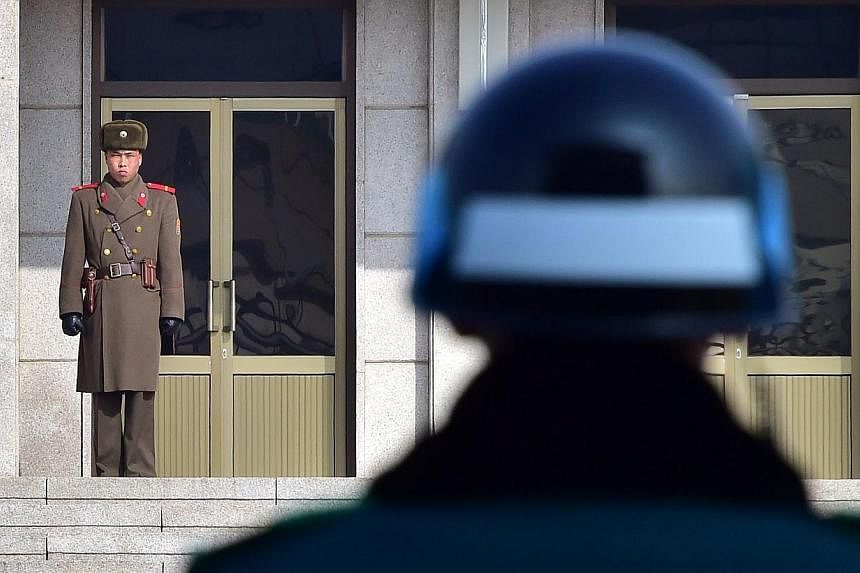WASHINGTON (AFP) - North Korea appears poised to expand its nuclear programme over the next five years and in a worst-case scenario could possess 100 atomic arms by 2020, US researchers warned Tuesday.
And cutting-edge European companies could be unwittingly contributing to Pyongyang's suspect nuclear programme with their equipment diverted to the isolated country via China, they said.
Unveiling the first results of what will be a 15-month study, Joel Wit, senior fellow at the US-Korea Institute at Johns Hopkins University, said some of their conclusions were very "disturbing".
Although the North Korea's nuclear programme remains shrouded in uncertainty, Pyongyang is currently believed to have a stockpile of some 10 to 16 nuclear weapons fashioned from either plutonium or weapons-grade uranium.
Using satellite imagery, North Korean media reports and their deep knowledge of nuclear programmes, Wit, and veteran nuclear non-proliferation expert David Albright, have drawn up three possible scenarios based on the progress that Pyongyang from 2009 to 2014.
Those years, which followed the 2008 collapse of international six-party nuclear talks, were "banner years" for Pyongyang's nuclear programme and missile systems development, Wit said.
"For these kinds of programmes there have been developments that make it at least more possible to predict the future," Wit told reporters.
"We're making our best guess about the future... we're estimating the future, just like intelligence agencies do."
In the first scenario, Pyongyang would almost double its stockpile to about 20 weapons, including plutonium-based weapons which have been miniaturised sufficiently to be mounted on its Rodong-class medium-range ballistic missile, capable of reaching Japan.
In the second - and most likely scenario - North Korea continues its current trajectory and manages to produce 50 weapons by 2020.
It would also make significant advances in miniaturisation technology enabling it to mount warheads on a new generation of intermediate-range ballistic missiles.
In what Wit dubbed "the worst case scenario," the North Korean stockpile would grow more rapidly to 100 weapons and make "significant advances" in weapons designs to enable it to potentially deploy battlefield and tactical weapons.
"This is a pretty scary scenario, where we are seeing a dramatic expansion in North Korea's stockpile," Wit said.
North Korea carried out nuclear tests in 2006, 2009 and 2013. It also regularly launches missile tests, triggering international condemnation.
Despite a network of international sanctions Pyongyang is able to acquire equipment, even from Western countries, which in some cases is bought by private Chinese companies and transported across the Chinese-North Korean border, said Albright.
"Just cracking down on the border could do a lot, and they (China) do very little now," said Albright, who exposed flaws in US claims in 2003 that Iraq had large stocks of nuclear and chemical weapons.
US lawmakers introduced legislation earlier this month that would widen sanctions by imposing harsher penalties on foreign companies doing business with Pyongyang.

